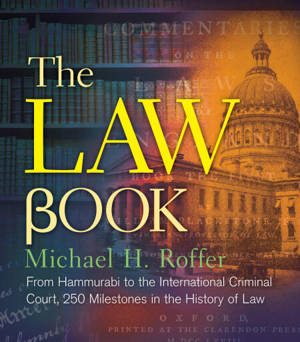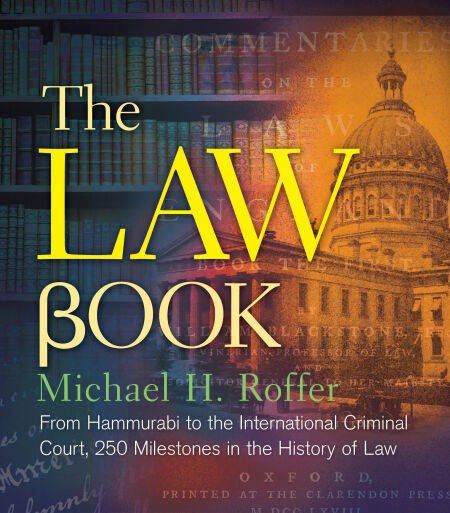
- Afhalen na 1 uur in een winkel met voorraad
- Gratis thuislevering in België vanaf € 30
- Ruim aanbod met 7 miljoen producten
- Afhalen na 1 uur in een winkel met voorraad
- Gratis thuislevering in België vanaf € 30
- Ruim aanbod met 7 miljoen producten
Zoeken
The Law Book E-BOOK
From Hammurabi to the International Criminal Court, 250 Milestones in the History of Law
Michael H. Roffer
€ 11,99
+ 11 punten
Uitvoering
Omschrijving
Which was the last country to abolish slavery? Which is the only amendment to the U.S. Constitution ever to be repealed? How did King Henry II of England provide a procedural blueprint for criminal law?
These are just a few of the thought-provoking questions addressed in this beautifully illustrated book. Join author Michael H. Roffer as he explores 250 of the most fundamental, far-reaching, and often-controversial cases, laws, and trials that have profoundly changed our world—for good or bad. Offering authoritative context to ancient documents as well as today’s hot-button issues, The Law Book presents a comprehensive look at the rules by which we live our lives. It covers such diverse topics as the Code of Hammurabi, the Ten Commandments, the Trial of Socrates, the Bill of Rights, women’s suffrage, the insanity defense, and more. Roffer takes us around the globe to ancient Rome and medieval England before transporting us forward to contemporary accounts that tackle everything from civil rights, surrogacy, and assisted suicide to the 2000 U.S. presidential election, Google Books, and the fight for marriage equality.
Organized chronologically, the entries each consist of a short essay and a stunning full-color image, while the “Notes and Further Reading” section provides resources for more in-depth study. Justice may be blind, but this collection brings the rich history of the law to light.
These are just a few of the thought-provoking questions addressed in this beautifully illustrated book. Join author Michael H. Roffer as he explores 250 of the most fundamental, far-reaching, and often-controversial cases, laws, and trials that have profoundly changed our world—for good or bad. Offering authoritative context to ancient documents as well as today’s hot-button issues, The Law Book presents a comprehensive look at the rules by which we live our lives. It covers such diverse topics as the Code of Hammurabi, the Ten Commandments, the Trial of Socrates, the Bill of Rights, women’s suffrage, the insanity defense, and more. Roffer takes us around the globe to ancient Rome and medieval England before transporting us forward to contemporary accounts that tackle everything from civil rights, surrogacy, and assisted suicide to the 2000 U.S. presidential election, Google Books, and the fight for marriage equality.
Organized chronologically, the entries each consist of a short essay and a stunning full-color image, while the “Notes and Further Reading” section provides resources for more in-depth study. Justice may be blind, but this collection brings the rich history of the law to light.
Specificaties
Betrokkenen
- Auteur(s):
- Uitgeverij:
Inhoud
- Aantal bladzijden:
- 528
- Taal:
- Engels
- Reeks:
Eigenschappen
- Productcode (EAN):
- 9781454901693
- Verschijningsdatum:
- 2/11/2015
- Uitvoering:
- E-book
- Beveiligd met:
- Adobe DRM
- Formaat:
- ePub

Alleen bij Standaard Boekhandel
+ 11 punten op je klantenkaart van Standaard Boekhandel
Beoordelingen
We publiceren alleen reviews die voldoen aan de voorwaarden voor reviews. Bekijk onze voorwaarden voor reviews.











